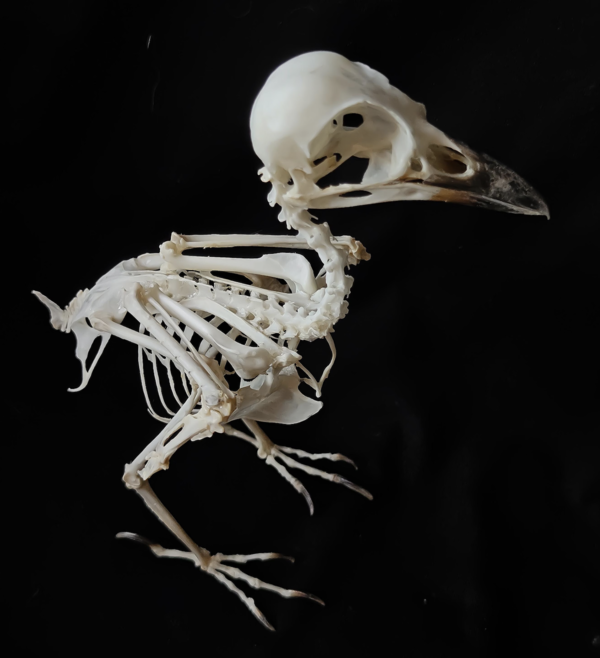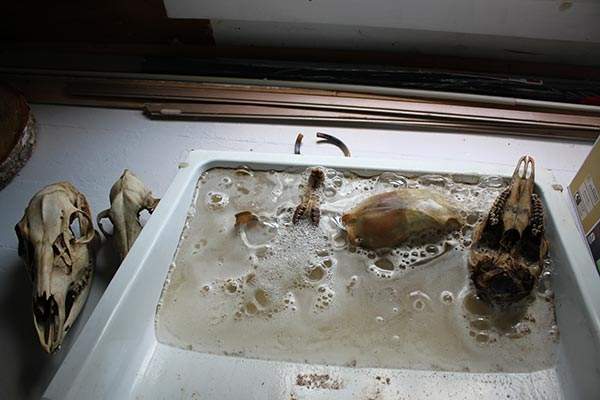Whether you’re a collector, artist, or just interested in preserving animal bones, it’s essential to sanitize them properly. Cleaning and sanitizing bones not only removes dirt, oils, and bacteria but also ensures that they last longer and are safe to handle. Here's a simple step-by-step guide on how to sanitize animal bones effectively.

Before you can sanitize bones, you need to make sure they’re free of any remaining flesh or tissue. There are several ways to do this depending on the condition of the bones:
Manual Removal: If there are still bits of flesh on the bones, carefully remove them with a knife or tweezers. Take your time to avoid damaging the bone.
Maceration (Water Soaking): If the bones have a lot of tissue left, you can macerate them. Place the bones in a container of water and let them sit for a few weeks. The water helps break down and soften the tissue, which will eventually fall off. Change the water regularly to keep the smell down.

Animal bones often contain fats and oils that can cause them to look greasy and attract dirt over time. To remove these oils, you need to degrease the bones.
Soak in Dish Soap: Fill a container with warm water and add a few drops of mild dish soap. Submerge the bones and let them soak for a few days. This helps to pull out any remaining oils. You can also scrub the bones gently with a soft brush to remove any surface grease.
Change the Water Regularly: As the bones soak, the water may become cloudy with oils. Change the water and soap every few days until the bones stop releasing oils.
Once the bones are free of flesh and grease, it’s time to sanitize them. This step removes any lingering bacteria or pathogens, making the bones safe to handle and display.
Hydrogen Peroxide Soak: The most effective way to sanitize bones is by soaking them in a hydrogen peroxide solution. Use a 3% hydrogen peroxide solution (the kind you can find in most pharmacies). Submerge the bones in the solution for 24 to 48 hours. This will not only sanitize the bones but also whiten them, giving them a cleaner appearance.
Avoid Bleach: Never use bleach to sanitize bones. While it might seem like a good disinfectant, bleach can weaken and damage the bone structure over time, causing the bones to become brittle.
After sanitizing, it’s important to let the bones dry thoroughly. Damp bones can develop mold or other problems if not dried properly.
Air Dry: Place the sanitized bones on a clean towel in a dry, well-ventilated area. Allow them to air dry completely, which could take a few days depending on the size of the bones.
Sunlight: If possible, let the bones dry in sunlight. The sun’s UV rays can provide extra sanitization and help further whiten the bones.
To protect the bones and preserve them for longer, you can seal them with a light layer of clear varnish or polyurethane. This step is optional but can help keep the bones looking their best and prevent future damage.
Apply a Thin Layer of Sealer: Use a soft brush to apply a thin coat of clear varnish, polyurethane, or bone-specific sealer to the surface. Let it dry fully before handling the bones.
Sanitizing animal bones is a straightforward process that involves cleaning, degreasing, and sanitizing to ensure they are safe to handle and display. By following these simple steps—removing tissue, degreasing with soap, sanitizing with hydrogen peroxide, and drying thoroughly—you can keep your bones in great condition for years to come. Whether for art, study, or collection, properly sanitized bones are clean, safe, and long-lasting.
animal tags: Animal-Bones
We created this article in conjunction with AI technology, then made sure it was fact-checked and edited by a Animals Top editor.